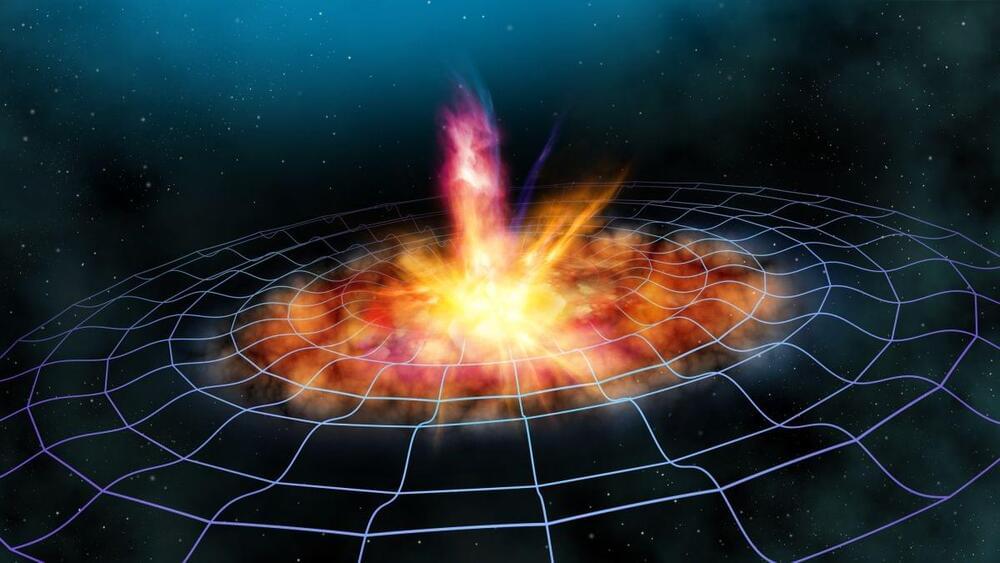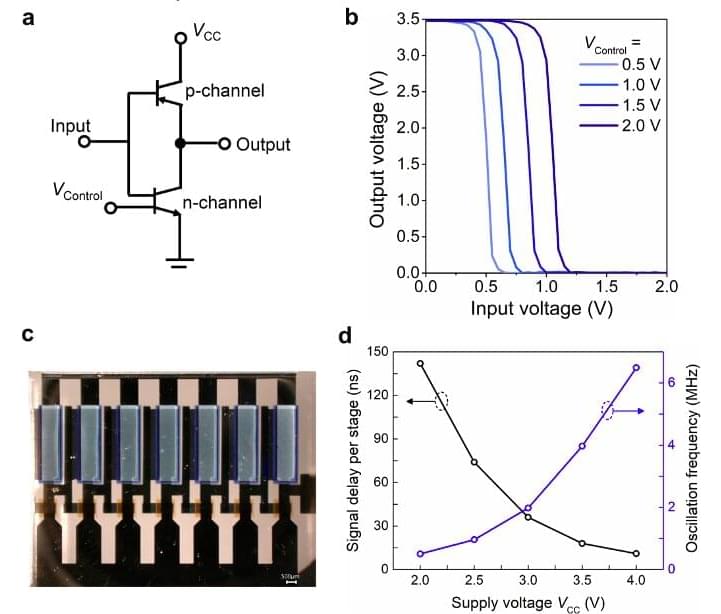They’re just the size of a grain of sand, but the microfliers can carry data-collecting sensors.



[Matt] from [DIY Perks] has made a name for himself building nice custom computing machines, and his latest triple-monitor luggable PC (video after the break) is sure to give most high-performance desktop machines a run for their money.
The large central monitor folding laptop monitors mounted vertically on either size look impressive, but only just scratches the surface of this build. Hidden behind aluminum panels are Ryzen 5950X CPU and RTX 3,080 GPU with water cooling, 64 GB of RAM, and two 8 TB SSDs. A set of high-quality speaker drivers, subwoofer, and audio amps is also included. All this hardware pulls about 600 W of power from a large DC-DC converter block, which in turn receives power from either a pair of onboard AC-DC converters or a 16 V – 63 V DC source, like a battery system.
To mount everything to the back of the main monitor, [Matt] created 3D printed adaptor blocks with threaded inserts which slide under existing hooks on the back of the monitor. Aluminum angles screw to these blocks to cover the edges of the display panel, together with a large mounting plate with pre-drilled holes to mount all the components on standoffs. A set of adjustable and removable legs mount to the side of the PC. A hinged door in the back cover allows storage space for a keyboard and mouse during transport. When folded, the laptop monitors don’t fully cover the main monitor, so [Matt] created a leather cover that doubles as a cable and accessory organizer.

Kathy Patten, a grandmother from Baltimore, suffered a heart attack and spent 45 long minutes clinically dead. But some intense CPR actually managed to bring her back to life, giving her a second chance that local news stations are calling a “medical miracle.”
Patten has reportedly made an almost full recovery, something that is exceedingly rare. While TV dramas give the impression that CPR is often successful, the reality is grim. Only around 10.6 percent of those who experience cardiac arrest are later discharged from the hospital, according to a 2018 study, though those numbers fluctuate depending the severity and timing of the incident.
“I’m so grateful God gave me a second chance,” Patten told CBS affiliate WJZ-TV. “I’m just going to be the best person I can be. It’s very scary, coming back is a second chance of life.”
Forward-looking: A team of researchers have devised a new method for protecting SSDs from ransomware attacks. It can detect ransomware, stop it in its tracks, and even recover stolen data in a matter of seconds. The cost should only be a minor increase in the SSD’s latency.
The Register spoke with the researchers, who come from Inha University, the Daegu Gyeongbuk Institute of Science & Technology (DGIST), the University of Central Florida (UCF), and the Cyber Security Department at Ewha Womans University (EWU). The system, called SSD-Insider, is supposedly almost 100 percent accurate and has been tested on real-world ransomware.
SSD-Insider works by recognizing certain patters in SSD activity that are known to indicate ransomware. “To recognize ransomware activity by viewing only the distribution of IO request headers, we have paid attention to a ransomware’s very unique behavior, overwriting,” reads the team’s research paper proposing SSD-Insider. It specifically points out the behavior of ransomware like WannaCry, Mole, and CryptoShield.

Circa 1991 😀
An Australian company has launched an erasable computer memory chip that retains data when its power source is switched off. The chip could revolutionise the design of computers and other electronic devices by doing away with the bulky magnetic disc memories that are currently used to store data permanently.
Current computers rely on a selection of memory devices. These include chips known as read-only memories or ROMs that store preprogrammed data without power but cannot be erased, and instantly erasable chips that require constant power, known as random-access memory or RAMs. To store more data and programs when the power is off, most computers use magnetics discs.
The new chip is known as a ferroelectric random-access memory or FRAM. If it proves as successful as its developer, Ramtron, claims, it could replace all other types of data storage.
The ultimate goal of neuroscience is to learn how the human brain gives rise to human intelligence and what it means to be intelligent. Understanding how the brain works is considered one of humanity’s greatest challenges.
Jeff Hawkins thinks that the reality we perceive is a kind of simulation, a hallucination, a confabulation. He thinks that our brains are a model reality based on thousands of information streams originating from the sensors in our body. Critically — Hawkins doesn’t think there is just one model but rather; thousands.
Jeff has just released his new book, A thousand brains: a new theory of intelligence. It’s an inspiring and well-written book and I hope after watching this show; you will be inspired to read it too.
Pod version: https://anchor.fm/machinelearningstreettalk/episodes/59—Je…ry-e16sb64
https://numenta.com/a-thousand-brains-by-jeff-hawkins/
https://numenta.com/assets/pdf/research-publications/papers/…tworks.pdf.
https://numenta.com/neuroscience-research/research-publicati…neocortex/
Your Brain Is Not an Onion With a Tiny Reptile Inside.
A spectacular portrait of the galaxy Centaurus A has been captured by astronomers using the Dark Energy Camera mounted on the Víctor M. Blanco 4-meter Telescope at Cerro Tololo Inter-American Observatory in Chile. This galaxy’s peculiar appearance—cloaked in dark tendrils of dust—stems from a past interaction with another galaxy, and its size and proximity to Earth make it one of the best-studied giant galaxies in the night sky.
The galaxy Centaurus A, which lies over 12 million light-years away in the direction of the southern-hemisphere constellation Centaurus (The Centaur), is the leading light of this striking image. This image provides a spectacular view of the luminous glow of stars and the dark tendrils of dust that hide the bright center of the galaxy. This dust is the result of a past galactic collision, in which a giant elliptical galaxy merged with a smaller spiral galaxy. As well as large amounts of gas and dust, Centaurus A’s dust lane contains widespread star formation, as indicated by the red clouds of hydrogen and by the large number of faint blue stars visible at each end of the dust lane.
The proximity and brightness of Centaurus A—it is one of the closest giant galaxies to Earth—make it one of the best-studied objects in the southern hemisphere night sky. Since its discovery in 1,826 scientists have studied the galaxy exhaustively with many different kinds of telescopes, revealing a variety of intriguing features. Radio telescopes reveal a colossal jet of matter spewing outward from the heart of the galaxy. This jet is accelerated to almost half the speed of light by a supermassive black hole at the center of Centaurus A, and its bright emissions at radio wavelengths make this galaxy one of the most prominent radio sources in the night sky. In fact, in July 2,021 the Event Horizon Telescope produced an image of a jet launching from the black hole in Centaurus A, which weighs in at 55 million times the mass of the Sun.

Integrated circuits (ICs) based on organic transistors have many valuable applications, for instance, in the fabrication of paper-like displays or other large-area electronic components. Over the past few decades, electronics engineers worldwide have developed a variety of these transistors.
A promising alternative to these transistors are vertical-channel dual-gate organic thin-film transistors. These transistors have several advantageous properties, such as short channel lengths and tuneable threshold voltages (VTH). Despite these advantages, due to a lack appropriate p-and n-type devices, developing complementary inverter circuits for these transistors has so far proved challenging.
Researchers at Technische Universitat Dresden, Helmholtz-Zentrum Dresden Rossendorf (HZDR) and Northwestern Polytechnical University have recently developed vertical organic permeable dual-base transistors that could be integrated in logic circuits. In a recent paper published in Nature Electronics, they evaluated the potential use of these transistors in complex integrated circuits.
“There’s nothing in the universe that looks fast to this camera.”